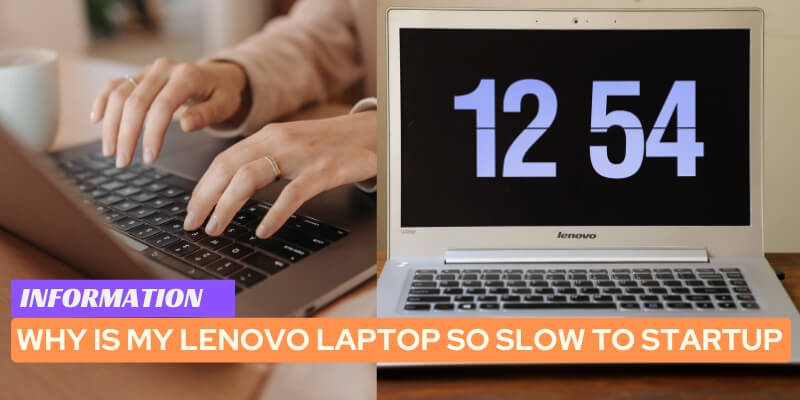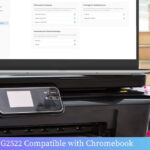Your Lenovo laptop may be slow to startup due to excess background processes or a lack of available resources. Additionally, outdated drivers or a fragmented hard drive can also contribute to a slow startup.
To resolve this issue, you can optimize startup programs, update drivers, and run disk cleanup and defragmentation tools.
By taking these steps, you can improve the startup speed of your Lenovo laptop.
Table of Contents
Common Causes Of Slow Startup
A slow startup can be frustrating when you’re in a hurry to finish your work or want to use your Lenovo laptop without any delays.
But what causes this sluggish startup? Let’s explore some common culprits:
1. Insufficient Ram
If your Lenovo laptop takes forever to start up, insufficient RAM could be to blame. RAM, or Random Access Memory, is responsible for storing temporary data that your laptop needs to run programs smoothly.
When your laptop has insufficient RAM, it struggles to handle multiple tasks simultaneously, leading to a slow startup.
Do you find your laptop freezing or slowing down even with simple tasks? That could indicate a lack of RAM.
Consider upgrading your RAM if you frequently experience slow startup or overall system performance issues.
2. High Disk Usage
Another common cause of slow startup is high disk usage. When your disk usage is at or near 100%, your laptop’s performance suffers, causing delays during startup.
Several factors can contribute to high disk usage, including heavy background processes, malware, fragmented disks, or outdated drivers.
To address high disk usage, you can try the following solutions:
- Terminate unnecessary background processes: Press Ctrl + Shift + Esc to open the Task Manager. Sort the processes by disk usage and end any unnecessary ones.
- Perform a malware scan: Use reliable antivirus software to scan your laptop for malware and remove any infections.
- Defrag your disk: Defragmenting your disk can help optimize its performance by rearranging fragmented data.
- Update drivers: Outdated drivers can also contribute to high disk usage. Visit the Lenovo website or use the Lenovo Vantage app to update your drivers.
3. Startup Programs Overload
When your Lenovo laptop loads too many startup programs, it can significantly slow down the startup process.
These programs, which automatically launch upon booting up your laptop, take up valuable system resources and delay the time it takes for your laptop to become fully functional.
To alleviate this issue, take a moment to evaluate your startup programs and disable any unnecessary ones.
Here’s how:
- Open the Task Manager by pressing Ctrl + Shift + Esc.
- Switch to the Startup tab.
- Review the list of programs that are set to launch during startup.
- Right-click on the programs you want to disable and select Disable.
By reducing the number of startup programs, you can streamline your Lenovo laptop’s startup process and enjoy a faster boot-up time.
Quick Fixes For Slow Startup
Experiencing a slow startup on your Lenovo laptop can be frustrating, especially when you rush to get things done.
Luckily, there are quick and effective fixes that can improve the startup speed of your laptop. In this article, we will explore three critical solutions: upgrading RAM, optimizing disk usage, and disabling unnecessary startup programs.
Each of these fixes can significantly enhance the performance of your Lenovo laptop, allowing you to get back to work faster.
1. Upgrade Ram For Better Performance
One of the most common reasons for a slow startup is insufficient memory or RAM.
When your laptop doesn’t have enough RAM, it struggles to load all the necessary files and programs during startup, resulting in a sluggish performance.
Upgrading your RAM can provide a significant boost to your laptop’s speed and overall performance.
Here’s a step-by-step guide to upgrading your RAM:
- Identify the RAM type and capacity your Lenovo laptop supports. You can typically find this information in your laptop’s user manual or by visiting the manufacturer’s website.
- Buy the recommended RAM module from a reliable vendor. Make sure it matches the specifications of your laptop.
- Power off your laptop and disconnect it from any external power source.
- Locate the RAM compartment on your laptop. This is usually found underneath a cover on the bottom of the laptop.
- Carefully remove the cover and locate the existing RAM module(s).
- Gently release the clips on either side of the RAM module(s) and slide them out.
- Insert the new RAM module(s) into the empty slot(s) at a 45-degree angle, ensuring that the notches on the module(s) align with the slot(s) on the motherboard.
- Press down firmly on the module(s) until the clips lock it into place.
- Replace the cover and power on your laptop.
2. Optimize Disk Usage
Another common cause of slow startups is disk fragmentation and clutter. Over time, your laptop’s hard drive becomes fragmented as files are added, modified, and deleted.
This fragmentation can significantly impact the speed at which your laptop boots up. Optimizing your disk usage can improve startup speed by rearranging files and removing unnecessary clutter.
Here are some tips to optimize your disk usage:
- Regularly run disk cleanup and remove temporary files, system caches, and unnecessary program files.
- Defragment your hard drive using the built-in Windows Disk Defragmenter or third-party software.
- Consider upgrading to a solid-state drive (SSD) if your budget allows. SSDs offer faster read/write speeds and can significantly improve your laptop’s overall performance.
3. Disable Unnecessary Startup Programs
When you start your Lenovo laptop, numerous programs and processes automatically launch in the background.
These startup programs can consume valuable system resources and slow down the startup process.
By disabling unnecessary startup programs, you can streamline your laptop’s boot-up sequence and reduce the time it takes to start.
Here’s how you can disable startup programs:
- Open the Task Manager by pressing Ctrl+Shift+Esc or by right-clicking on the taskbar and selecting “Task Manager”.
- Click on the “Startup” tab to view a list of programs that launch during startup.
- Select the programs you want to disable and click “Disable” or “Disable all” if you prefer to start with a clean slate.
- Restart your laptop to apply the changes.
By following these quick fixes, you can significantly enhance the startup speed of your Lenovo laptop.
Whether you’re upgrading your RAM, optimizing disk usage, or disabling unnecessary startup programs, each solution plays a crucial role in improving performance.
Implement these fixes today and enjoy a faster, more efficient startup experience.
Updating Bios For Improved Startup Speed
Are you frustrated with your Lenovo laptop taking forever to start up? The sluggish startup can be a significant hindrance, causing delays and frustrations in your daily workflow.
Don’t worry; there’s a solution to this problem. By updating the BIOS on your Lenovo laptop, you can significantly improve the startup speed.
1. Understanding The Importance Of Bios Updates
BIOS (Basic Input/Output System) is firmware that resides on your computer’s motherboard.
It is responsible for initializing all the hardware components during the boot process. Over time, the original BIOS may become outdated and inefficient, resulting in slower startup times.
Updating the BIOS can bring several performance benefits. Not only does it improve startup speed, but it also enhances the system’s stability and compatibility with newer software and hardware.
Additionally, BIOS updates often fix bugs and security vulnerabilities, ensuring your laptop remains protected.
2. Steps To Update Bios On Lenovo Laptops
Updating the BIOS may sound daunting, but with a few simple steps, the process becomes relatively straightforward.
Remember, before proceeding with any BIOS update, it is crucial to back up your important files and ensure your laptop is connected to a stable power source.
- Visit the Lenovo Support website and navigate to the “Drivers & Software” section.
- Enter your laptop’s model number, or let the website automatically detect your machine
- Locate and download the latest BIOS update for your specific Lenovo laptop model.
- Once downloaded, double-click the BIOS update file to start the installation process. Follow the on-screen prompts and instructions provided by the installer.
- During the installation, it is crucial not to interrupt the process or power off your laptop. Doing so can result in irreparable damage to your system.
- After the installation completes, restart your laptop to apply the BIOS update.
And there you have it! Following these steps ensures your Lenovo laptop is running the latest BIOS version, resulting in improved startup speed and overall performance.
Updating the BIOS on your Lenovo laptop can be the key to resolving the slow startup issue.
It is a relatively simple process that can significantly improve your laptop’s performance and stability. So, don’t hesitate to take this step and experience the benefits firsthand.
Cleaning Registry For A Faster Startup
1. The Role Of The Registry In Startup Speed
The registry in your Lenovo laptop plays a crucial role in its overall performance, including the speed at which it starts up.
The registry is a centralized database that stores information and settings for the operating system, hardware, and software applications.
It serves as a reference point for your laptop to access important information quickly.
This means that a cluttered and bloated registry can significantly slow down your laptop’s startup process.
Over time, as you install and uninstall programs or make changes to your laptop’s settings, the registry can become filled with unnecessary and obsolete data that can cause delays during startup.
2. Tools And Methods To Clean The Registry
Cleaning the registry of your Lenovo laptop can help optimize its startup speed. There are several tools and methods available that can assist you in this process.
Here are a few commonly used options:
1. Registry cleaner software
A registry cleaner software is a specialized tool designed to scan and fix issues within the registry. It can identify and remove redundant or broken entries, helping to streamline the startup process.
Some popular registry cleaner software options include:
| Software | Features |
| Ccleaner | – Scans and repairs registry errors – Removes temporary files – Manages startup programs |
| Wise Registry Cleaner | – Deep scans for registry issues – Optimizes registry – One-click cleanup feature |
| IObit Advanced SystemCare | – Fixes registry issues – Performs system optimization – Boosts startup speed |
2. Manual registry cleaning
If you prefer a more hands-on approach, you can also clean the registry manually. However, this method requires caution as editing the registry incorrectly can potentially cause system instability.
Here are the steps to manually clean your Lenovo laptop’s registry:
- Backup your registry: Before making any changes, create a backup of your registry in case anything goes wrong.
- Access the Registry Editor: Press Windows + R on your keyboard, type regedit, and press Enter to open the Registry Editor.
- Navigate to the registry keys: Use the left pane of the Registry Editor to navigate to the registry keys related to startup programs or any entries you believe are unnecessary.
- Delete unwanted entries: Right-click on the entry you want to delete and select Delete. Exercise caution and only delete entries that you are confident are unnecessary or problematic.
- Repeat as necessary: Continue navigating through the registry keys, deleting unwanted entries until you have cleaned the relevant sections.
- Restart your laptop: Once you have completed the manual cleaning process, restart your laptop to apply the changes.
By cleaning the registry regularly, either with the help of software or manually, you can speed up the startup time of your Lenovo laptop.
However, it’s important to note that registry cleaning alone may not solve all of your laptop’s performance issues.
It is always recommended to maintain a clutter-free system by regularly removing unused programs and optimizing other aspects of your laptop’s performance.
Managing Startup Programs For Better Performance
One of the common reasons why your Lenovo laptop may be slow to startup is the presence of unnecessary startup programs.
These programs load automatically when you turn on your laptop, consuming valuable system resources and slowing down the whole process.
To improve the startup time and overall performance of your Lenovo laptop, it becomes essential to identify and disable these unnecessary startup programs.
In this section, we will explore two methods to effectively manage startup programs – using Task Manager and utilizing third-party software. Identifying and Disabling Unnecessary Startup Programs
To begin with, identifying unnecessary startup programs is the first step toward optimizing your Lenovo laptop’s performance.
Here’s how you can do it using Task Manager:
- Press the “Ctrl + Shift + Esc” keys simultaneously to open the Task Manager.
- In the Task Manager window, click on the “Startup” tab.
- You will see a list of programs that are set to launch during startup.
- Carefully examine each program and identify the ones that you don’t need to start automatically.
Once you have identified the unnecessary startup programs, it’s time to disable them. Follow these steps:
Unnecessary Startup Programs | Disable
———————————————————
Program A | Disable
Program B | Disable
Program C | Disable
Using Task Manager and Third-Party Software for Management
While the Task Manager is a handy tool for managing startup programs, there are also third-party software options available that offer more advanced features.
These software programs provide additional insights and control over startup programs, allowing you to optimize your Lenovo laptop’s startup process further.
Here are a few popular third-party software programs you can consider:
- CCleaner: CCleaner offers a simple and efficient way to manage startup programs. It allows you to enable, disable, or delete startup items with just a few clicks.
- Autoruns: Autoruns provides comprehensive details about each startup program and enables you to manage them effectively. With its advanced features, you can dig deep into the startup process and make informed decisions.
- Soluto: Soluto is a user-friendly software that not only allows you to manage startup programs but also provides recommendations to improve overall system performance.
By utilizing tools like Task Manager and third-party software, you can easily disable unnecessary startup programs and improve your Lenovo laptop’s startup time and performance.
Take some time to identify and disable programs that are not essential, and you’ll notice a significant improvement in your laptop’s overall responsiveness.
Frequently Asked Questions For Why Is My Lenovo Laptop So Slow To Startup
Why Does My Lenovo Laptop Take So Long To Turn On?
There could be several reasons why your Lenovo laptop takes a long time to turn on. It might be due to excessive background processes, software conflicts, or hardware issues. To resolve this, try disabling unnecessary startup programs, updating your operating system, and running a hardware diagnostic test.
How Can I Make My Lenovo Laptop Boot Faster?
To make your Lenovo laptop boot faster, you can try these steps:
1. Disable unnecessary startup programs.
2. Clean up your hard drive by removing unnecessary files.
3. Update your operating system and drivers.
4. Enable Fast Startup in your power settings.
5. Upgrade your laptop’s hardware, such as adding more RAM or upgrading to a solid-state drive (SSD).How Do I Fix My Slow Lenovo Laptop?
To fix your slow Lenovo laptop, first, check for malware and viruses using reputable antivirus software. Next, free up disk space by deleting unnecessary files and programs. Update your operating system and drivers to the latest versions. Finally, consider upgrading your RAM or replacing the hard drive with an SSD for improved performance.
Why Is My Lenovo Laptop So Slow All Of A Sudden?
Your Lenovo laptop may be slow all of a sudden due to several reasons. One common cause could be an overloaded hard drive or insufficient RAM. Another possibility is the presence of malware or unnecessary startup programs. Clearing up storage space and performing regular maintenance can improve its speed.
Why Is My Lenovo Laptop Taking So Long To Startup?
There could be several reasons for your Lenovo laptop’s slow startup, such as too many startup programs, low disk space, or outdated software.
How Can I Speed Up The Startup Process On My Lenovo Laptop?
To speed up the startup process on your Lenovo laptop, you can disable unnecessary startup programs, clean up your hard drive, and ensure your software is up to date.
Does A Fragmented Hard Drive Affect My Lenovo Laptop’s Startup Speed?
Yes, a fragmented hard drive can significantly affect your Lenovo laptop’s startup speed. To fix this issue, you can use the built-in Disk Defragmenter tool or third-party software.
Is It Necessary To Update The Bios For Improving My Lenovo Laptop’s Startup Speed?
Updating the BIOS can sometimes improve your Lenovo laptop’s startup speed, especially if there are known compatibility issues or performance improvements provided by the update.
Can A Full Hard Drive Cause My Lenovo Laptop To Start Slowly?
Yes, a full hard drive can impact your Lenovo laptop’s startup speed, as it takes longer for the system to locate and load the necessary files. Freeing up disk space can help resolve this issue.
What Are The Startup Programs That I Can Safely Disable On My Lenovo Laptop?
Common startup programs that can safely be disabled on your Lenovo laptop include software updaters, media players, chat clients, and unnecessary background services.
Conclusion on Why Is My Lenovo Laptop So Slow To Startup
If you find your Lenovo laptop taking ages to start up, there are several probable culprits. It could be due to too many startup programs, a full hard drive, outdated software, or malware.
By following the troubleshooting steps and best practices mentioned, you can resolve the slow startup issue and enjoy a faster and smoother user experience.
Boost your laptop’s performance and get back to work or leisure activities without unnecessary delays.






